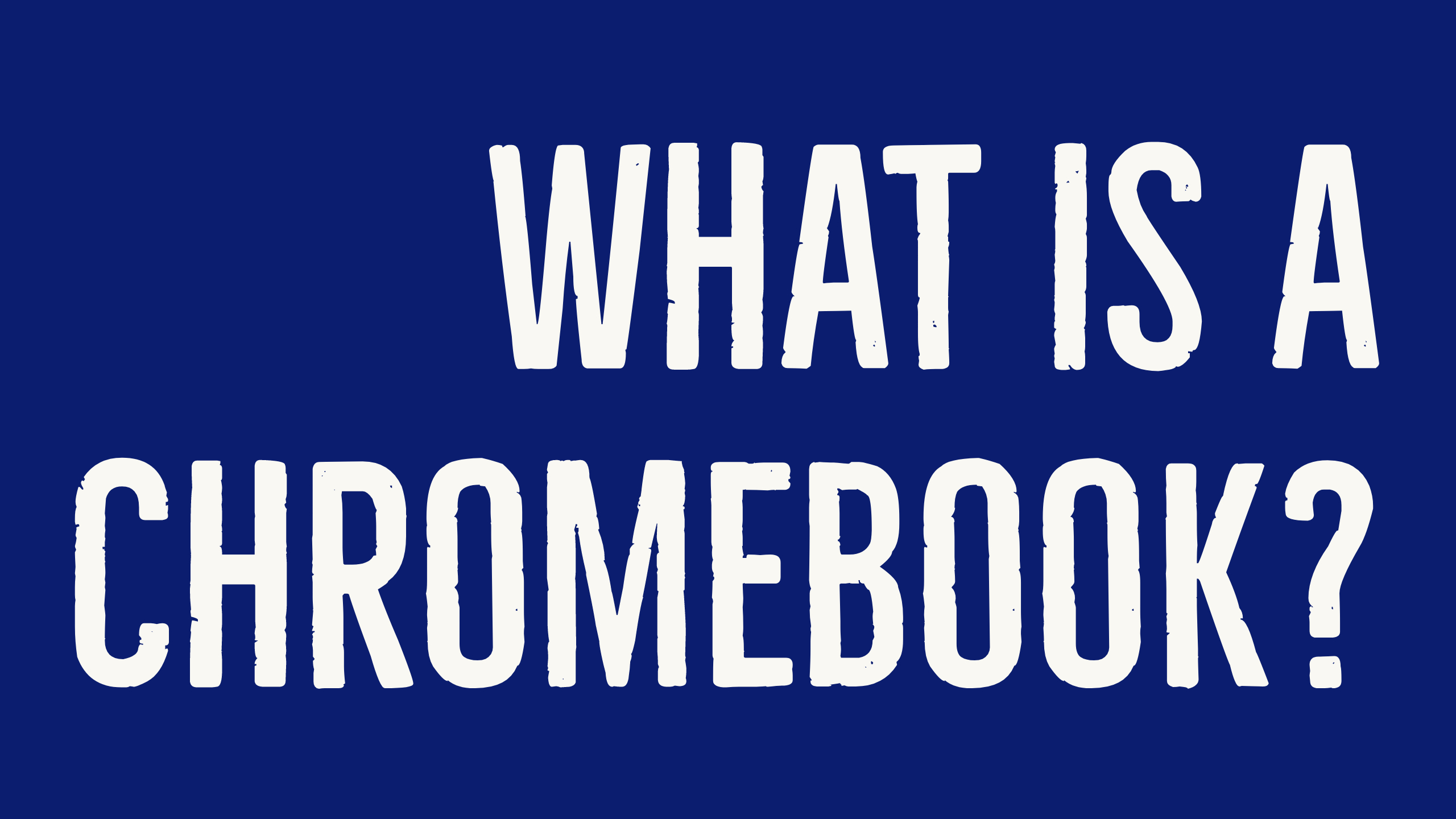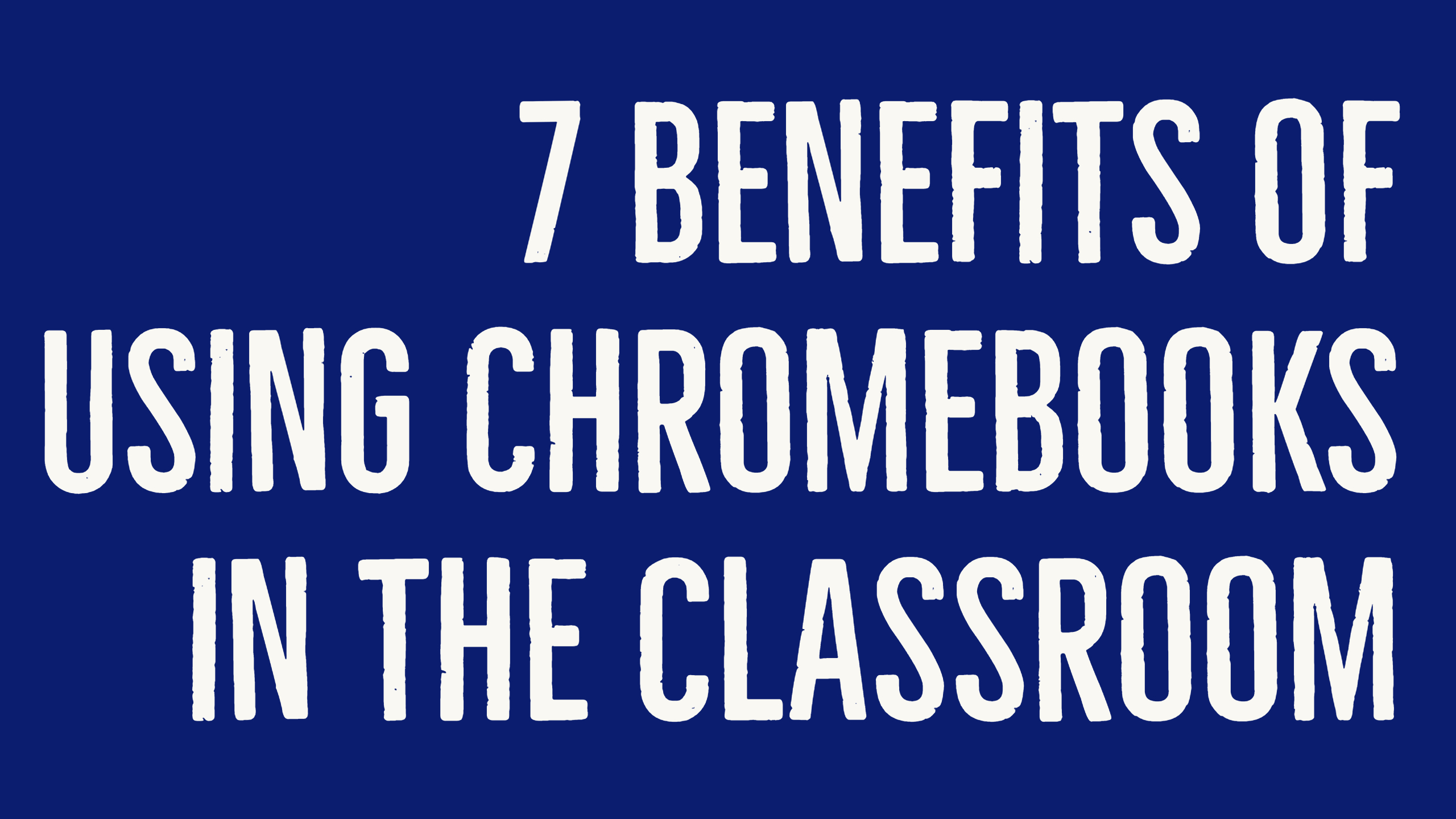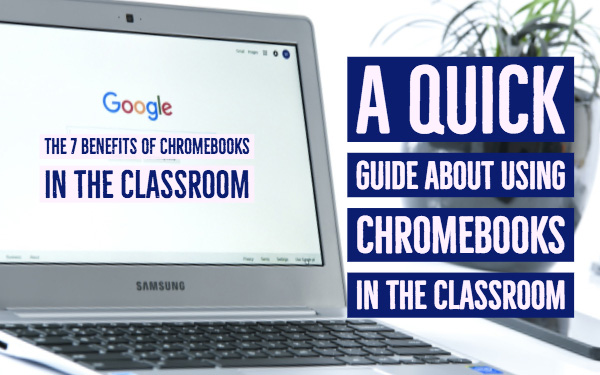A quick guide about using Chromebooks in the classroom
 Lucie Renard —
Lucie Renard —
In this post, you’ll find everything about the Chromebook classroom. What is a Chromebook? Why should you use a Chromebook? What are the benefits of a chromebook and how can you manage Chromebooks? What are the perfect Chromebook apps and what’s the best chromebook for your students?
Let’s dive right in!
First things first:

What is a Chromebook?
A Chromebook is something like a computer, but it’s nothing like a computer at all. Say what?! 🤔
This is how a Chromebook works: a Chromebook is some kind of a laptop that runs on Google’s web-based Chrome OS. You could say that it’s Google’s Chrome browser dressed up like an ordinary Windows desktop. This also means Chromebooks have to be used with an internet connection. Most of the Chromebook’s documents and apps exist in “the cloud” rather than on the device itself. Google automatically provides 100 GB Google Drive space for every Chromebook.
Most Chromebook apps launch as a new tab in Chrome and because Chromebooks use only web apps, it won’t let you download applications like Skype, photoshop, iTunes, etc.
And what if the internet connection is really bad in your classroom? It’s not the worst case scenario. It happens a lot. Despite the fact that Chromebooks are web-based, you don’t always need internet access. You can also use Chromebooks offline. You can still create and edit Google Docs and watch movies on Google Play offline.

The 7 benefits of using Chromebooks in the classroom
So why should you use chromebooks in your classroom? Let’s take a look at the advantages of a Chromebook.
1. Chromebooks are inexpensive
 That’s probably the number 1 reason that gets schools over the bridge and buy Chromebooks. They are so much cheaper than iPads and laptops. And of course you still can do quite a lot with them as well.
That’s probably the number 1 reason that gets schools over the bridge and buy Chromebooks. They are so much cheaper than iPads and laptops. And of course you still can do quite a lot with them as well.
You can have a good basic and cheap Chromebook starting from $200. Finding the best Chromebook for your lessons is up to you. Here you’ll find some of the finest Chromebooks for education.
2. Chromebooks are easy to use
 Chromebooks for students are a perfect match. They are portable, don’t weigh much, boot up fast and have a long lasting battery up to 8 hours. Any student, young or old, can handle a Chromebook. Thereby, the school controls the Chromebooks. A student can’t really do anything wrong.
Chromebooks for students are a perfect match. They are portable, don’t weigh much, boot up fast and have a long lasting battery up to 8 hours. Any student, young or old, can handle a Chromebook. Thereby, the school controls the Chromebooks. A student can’t really do anything wrong.
3. Chromebooks are easy to manage
 With the Google Admin Console, selected apps can be pre-installed, accessed, or blocked. Teachers can view usage and configuration reports for individual students as well. On top that, schools have the option of filtering and monitoring mail, and internet content.
With the Google Admin Console, selected apps can be pre-installed, accessed, or blocked. Teachers can view usage and configuration reports for individual students as well. On top that, schools have the option of filtering and monitoring mail, and internet content.
If a teacher has a problem using Chromebooks, support is available twenty-four hours a day/seven days a week, online, by email, by chat, or phone.
So, I think you could say that managing Chromebooks is child’s play.
4. Chromebooks stimulate collaboration
 Gmail, Calendars, Google Classroom, Google Docs, Google Slides, Google Sheets and video conferencing all allow students to connect with others and to collaborate on classroom projects. Students can collaborate anytime, anywhere.
Gmail, Calendars, Google Classroom, Google Docs, Google Slides, Google Sheets and video conferencing all allow students to connect with others and to collaborate on classroom projects. Students can collaborate anytime, anywhere.
5. There’s a wide range of educational Chromebook apps
 The “Google Chromebook” is compatible with a wide range of apps. It has the support for Android apps and “Google apps for education”. In the Google Play store, you can find other applications that are a real asset to your classroom.
The “Google Chromebook” is compatible with a wide range of apps. It has the support for Android apps and “Google apps for education”. In the Google Play store, you can find other applications that are a real asset to your classroom.
Here are 3 of my favorite Chromebook apps.
- Google Classroom: You should definitely use Google Classroom to manage your digital classroom. Here’s a simple guide to set it up.
- BookWidgets: create your own interactive exercises and automatically graded tests with BookWidgets. Choose from more than 40 digital exercise templates and adapt them with your own content. Use Google Classroom to create and assign interactive BookWidgets exercises to your students. Here’s everything you need to know about this kick-ass integration.
- Google Docs: It sounds so normal, but it’s really handy. Like I’ve said before, students can collaborate with each other in the same document. You, as a teacher, can give real time feedback. Certainly worth a try.
Curious for more apps that will amaze you? I have some more Chromebook tips for you right here. Take a look at this post about these 10 apps that will rock you Chromebook.
6. Unlimited Chromebook users
 There is no limit on the number of students that can be included on “G suite for education” (the app platform especially for schools). Since the apps are attached to user profiles, Chromebooks can be used by different students as well.
There is no limit on the number of students that can be included on “G suite for education” (the app platform especially for schools). Since the apps are attached to user profiles, Chromebooks can be used by different students as well.
Every student has their own personalized profile and learning experience when they log in to their apps, settings, classwork, books, and videos. On top of that, Chromebooks can be easily shared with other students.
Guests can use Chromebooks as well, but they won’t be able to access any information on the Chromebook, nor save their work when finished.
7. Chromebooks are secure
 Since they have built-in security, there is no risk of unwanted software installations, adjusted settings, or malware. That’s also because you just can’t download things anymore.
Since they have built-in security, there is no risk of unwanted software installations, adjusted settings, or malware. That’s also because you just can’t download things anymore.
Chromebooks get their updates via the Google cloud server, which means that waiting for updates to happen are basically past tense.
Conclusion
That’s it for this post about Chromebooks for schools. I hope I convinced you to digitalise your classroom with Chromebooks. If you need more tips on that last topic, read about how you can create a paperless classroom with just 3 apps.
Are you more of an iPad teacher? Find out the differences between a iPads and Chromebooks right here.


